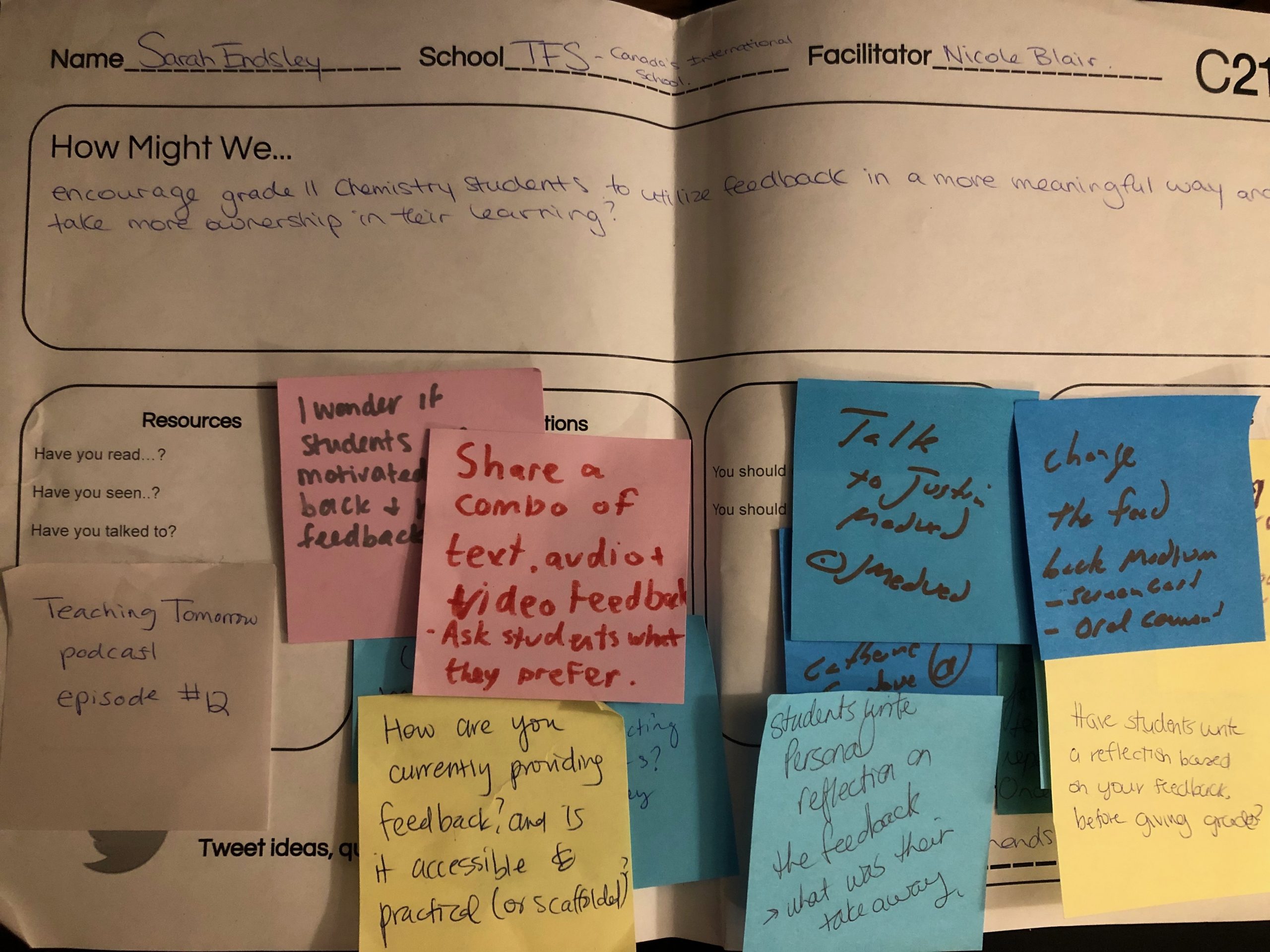After our last face to face I recieved a lot of encouragement and ideas from all of the wonderful members of #Cohort21. I have been really focused this year on how to ensure students are utilizing the feedback provided to take more ownership in their learning and foster a growth mindset. This has caused me to do a lot of reflecting on my own practice and it has led me to think of three main things:
1) What types of feedback foster a growth mindset amongst our students? – From all of the information I have gathered, traditional feedback often focuses on the performance of the student rather than the process. However, process feedback promotes a growth mindset.
2) When am I providing feedback – Once the grade is released, the learning is over. Feedback needs to be provided at a meaningful stage in the process of completing the task to ensure it is utilized. I want to be able to provide feedback during the assessment rather than at the end.
3) Medium of the feedback – Changing up the medium in which feedback is provided can allow me to determine most effective ways or perhaps break up the monotony of this process to keep them engaged in various tasks.
For my first “experiment” testing out some strategies.
I asked my students to design a lab where they were to investigate how one factor impacts the viscosity of an alkane. They were given two class periods to work on this. They were working on these through the google classroom assignment so I could flip through the various labs and would conference with the students about their project. The students were then told that they had to submit their rough draft and had to write to me about what they were most proud of in their lab and one area that they would like me to look at and provide feedback. I would read over the drafts and provide feedback on the specific area that they had identified for growth and commented on if they had identified correctly the area that needed to be addressed. They then had to act on the feedback provided and submit a final draft. I then graded the labs and when the rubrics were complete I would ask students to reflect on their progress and come up with a strategy for improving in the area the area for growth I identified.
Two main observations from the reflections my students produced:
1. Really hard on themselves when thinking about their areas for growth. Didn’t have a growth mindset, very often would say things like “I just don’t know how to make a good graph” or “My writing never makes sense”
2. Have a really hard time determining what strategies will allow them to improve in certain areas. For example, the student who identifies that their graphs are still not great will say “spend more time on graphs” rather than finding a resource that will allow them to better understand the feature of google sheets and graph making.
So now I am wondering if it might be useful to create a bank of skill building workshops for the students. Perhaps a resource library where they can access how to cite sources correctly or create a scatter plot that includes a line of best fit and equation of the line. The students could watch a video or access one resource from the library and then write to me about what aspects of this skill they still need to work on so it could be a more meaningful reflection.
Kind of moving a way from what I had originally thought my project would focus on, but I think this might create something tangible that could be used for years to come and shared amongst all science teachers.

I’ve noticed this too Esther and I like your idea of a skills lab. Whenever I have students do self-reflections I find that they truly struggle to identify the root of the problem or truly useful solutions. I wonder sometimes if we don’t give them enough support in this part of the process. It might even be something simple like breaking the skill itself down into it’s smaller component parts to help them identify more accurately which part they are struggling with.
@estewart is having her students write Feedback Letters and they need to refer to the letters before they begin their next large task. At least, I think that’s how it works? I haven’t tried it yet, but I’d love to hear more!
@sendsley Check out @bblack ‘s recent post on feedback and due dates and deadlines. Some really cool thinking that can inform your own in the post and in the comments.
I love this idea, especially if it is set up as a living document that as resources expire or you found/created a better example, you could update them. Have you thought about using links to video or websites but also adding exemplars of past student work so you kids can see what it “really looks like”?